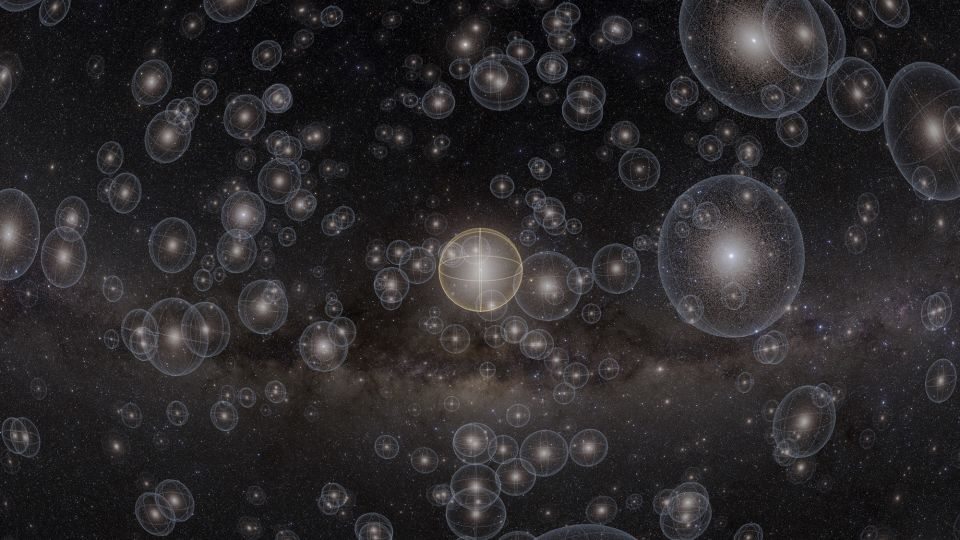
An unexpected discovery during the preproduction of a planetarium show could significantly alter our understanding of the Oort Cloud, one of the most enigmatic regions in our solar system. The Oort Cloud, a vast collection of icy bodies orbiting the sun at distances exceeding 1,000 times that of Neptune, has long been hypothesized to be spherical. However, a recent projection at the Hayden Planetarium in New York City unveiled a surprising spiral structure within this distant cloud.
The revelation occurred during the development of “Encounters in the Milky Way,” a show that premiered on Monday. As curators tested a scene depicting Earth’s celestial neighborhood, they were startled to see a spiral pattern, reminiscent of a spiral galaxy, within the Oort Cloud. Jackie Faherty, an astrophysicist at the American Museum of Natural History and the show’s curator, recounted her initial confusion upon witnessing the projection.
A New Perspective on the Oort Cloud
The spiral discovery prompted Faherty to consult David Nesvorny, a scientist at the Southwest Research Institute in Boulder, Colorado, and an expert on the Oort Cloud. Nesvorny had provided the scientific data used in the planetarium’s visualization. Initially suspecting a data artifact, Nesvorny confirmed the spiral’s presence upon reviewing his data and subsequently published a paper on the finding in The Astrophysical Journal.
“Weird way to discover things,” Nesvorny remarked. “I should know my data better, after years of working with it.”
Historically, the Oort Cloud was proposed in 1950 by Dutch astronomer Jan Oort as a shell of icy bodies extending up to 1.5 light-years from the sun. Despite being the solar system’s most remote region, it remains unseen due to the small size and vast distance of its constituent bodies.
Unveiling the Spiral
The spiral structure had eluded detection because Nesvorny had not previously visualized his data in three dimensions. “I never looked at it in Cartesian coordinates,” he explained. “But once you do that, it’s obvious. It’s there.”
To validate the discovery, Nesvorny employed NASA’s Pleiades Supercomputer to run extensive simulations. All models confirmed the spiral’s existence, revealing that the galactic tide—the gravitational influence of the Milky Way—affects the Oort Cloud’s inner region, twisting its orbital planes into a spiral form.
“All the simulations, all the models I have, show the spiral,” Nesvorny noted.
While the inner Oort Cloud exhibits this spiral structure, Nesvorny maintains that its outer portion likely remains spherical.
Implications for Future Research
Observing the Oort Cloud directly remains challenging. The recently operational Vera C. Rubin Observatory in Chile might aid in identifying individual icy bodies within the cloud, potentially enhancing our understanding of its structure. However, Nesvorny cautions that the telescope may discover only dozens of these bodies, insufficient for a comprehensive visualization of the spiral.
Faherty emphasized the importance of understanding the Oort Cloud’s shape in theorizing solar system evolution. “Maybe comets helped deliver water to Earth,” she suggested. “If you want to talk about the potential building blocks of life that surround our solar system, you need to understand its shape.”
Malena Rice, an assistant professor of astronomy at Yale University, praised the discovery for reshaping our perception of the solar system and its interaction with the galaxy. “This result reshapes our mental image of our home solar system,” she said, highlighting its significance in contextualizing the solar system within the broader galactic ecosystem.
Challenges and Future Prospects
Despite the theoretical nature of the findings, Edward Gomez, an astrophysicist at Cardiff University, acknowledged the potential of the spiral model but noted the difficulty in testing it due to the limited number of known Oort Cloud objects.
“What they are proposing could be true, but it could also be modeled by other shapes of the Oort Cloud or physical processes,” Gomez commented.
Simon Portegies Zwart, a professor at Leiden University, expressed skepticism about witnessing the spiral in the near future, given the observational challenges. However, he remains hopeful that the Vera Rubin Observatory might eventually detect enough inner Oort Cloud objects to reveal the spiral.
The accidental discovery at the Hayden Planetarium underscores the power of visualization in scientific exploration, offering a glimpse into the dynamic and interconnected nature of our solar system and its surrounding galaxy.





